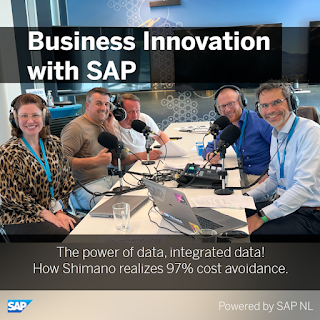UCD2, User Centered Design and Delivery
Next generation expectations
Imagine that you are part of the current studying generation.
With all the hard effort you are eager to start your professional life soon. You
are common to use Facebook, Twitter, Foursquare, Evernote and other fancy 'apps' to fulfill your needs. Apps with a great user experience - all designed
with you as a consumer of the app as a starting point. And then … you start your first day at the office - you get a welcome, a cup of coffee and your own
desk with a desktop running SAP with its famous blue screens … Guess you can
see the contrast of IT solutions (apps) that you got used to while in college
and the IT solution (SAP) that your company is using.
Design Thinking
Why this huge contrast? Well we all know that on the topic
of user experience there is enough to improve in the SAP world. That's why SAP
is spreading the word around Design Thinking these days. And that is a good
thing! Balance Business viability, Human desirability and Technical feasibility
to respond to business changes faster and offer friendlier user interface to
its users.
To do so, things have to be do done differently, a lot. With DesignThinking you will start the other way around, take the real business case and the people that are actually going to use your solution as a starting point. That is different as we are quite used to start with a data model, a transaction, a screen (or Dynpro in SAP-slang) or some other technical stuff.
To do so, things have to be do done differently, a lot. With DesignThinking you will start the other way around, take the real business case and the people that are actually going to use your solution as a starting point. That is different as we are quite used to start with a data model, a transaction, a screen (or Dynpro in SAP-slang) or some other technical stuff.
UCD2 - User Centered Design and Delivery
At Ciber we totally agree on taking the end-user seriously -
he/she is the real customer and by that it is very important to work with a
user centered approach. So yes we are enthusiastic on the topic of Design
Thinking and SAP's adoption to it. But it doesn't stop with designing - as an
IT consultancy firm we also like to deliver ;-) And there comes the second part
- User Centered Delivery. Add those two together and you have UCD2.
Margreet Klerkx, user experience designer at Ciber, created
this great overview on UCD2.
So what is UCD2?
It is all about co-creation, collaboration, bridging the gap
between business and IT folks, agility and delivering what your customers
really, really need. First understand the wish - sketch to see if you
understood the wish - design the end result and deliver. All steps in close
collaboration with business representatives, end-users and IT-techies. This is
how we do it:
Context Mapping
To really understand as-is, to-be and the end-users wishes.
Design Document
Combine results from context mapping into a design document
to get a uniform view.
Workshop
In a workshop all participants collaborate and inspire each
other on the future solution.
Mock up
A mock up or clickable demo, helps understanding the future
solution. Click through to experience the look and feel and prevent
unpleasant surprises upon delivery.
Conceptual Model
First step in delivery is translate the mockup is to create
a conceptual model to visualize the relationships of business objects.
Logical Model
With a logical model you define what is actually required.
Physical Model
Now plot the existing or new solution building blocks on
your model. What systems do you have in place and how is functionality exposed?
Application
And the fun begins, deliver the actual application, either a
mobile solution or a BI dashboard. And see how the involvement of the end-users
works out. Again do this highly interactive with multiple feedback moments,
scrum is a project approach that fits like a glove in this step.
Deliver accepted solutions
With UCD2 we want to emphasize the importance of
involving the end-user and to focus on a business process instead of a product.
With collaboration, co-creation and creativity you will be able to deliver
solutions that are really required and accepted. What more can you wish for?
Come join us and learn about UCD2 at
- SAP Mobile forum (NL), March 27
- VNSG (Dutch SAP User Group Convention), April 18 and 19
UCD2 and BI Thursday session 1 and session 2
UCD2 and enterprise mobility Friday session 1 and session 2
Oh and one final thought
It is nice to talk about UCD2, Design Thinking, …
but please mind if you talk to 'end-users' don't call them so. They are real
people with real names and real roles. End-users is again just a technical name
;-)






Comments